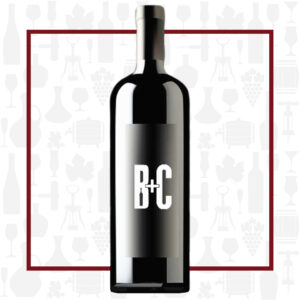Cellar Profile
7th generation farmers, the Mauritson family have been working these vineyards since 1868, finally releasing their own wines in 1998. The winery is now under the stewardship of former University of Oregon football player, Clay Mauritson, who grew up working the vineyards with his father before cutting his teeth at Kenwood Vineyards. Zinfandel and Cabernet Sauvignon specialists, Mauritson Wines is located at the corner of Dry Creek Valley and Lytton Springs Road, hallowed ground for Zinfandel, in particular. The vast majority of the Mauritson grapes are sold to premium producers throughout Sonoma County.
Region
Rockpile Ridge is one of California’s newest AVAs, sitting at the northwestern edge of Dry Creek Valley, in Sonoma County. It covers a high ridge (800-2000 feet in elevation) that sits above Lake Sonoma, just 13 miles from the Pacific Ocean. The presence of Lake Sonoma, which was created as a water reservoir in the early 1980s, helps to limit the Pacific Ocean fog here by creating an inversion layer that draws the cooler air toward the lake’s surface, allowing warmer air to rise. The sunny, mountainous Rockpile vineyards experience hot days and very cool evenings, allowing extremely long hang times for the area’s grapes. Like its closest neighbor, Dry Creek Valley, Rockpile is best known for its Zinfandel, making intensely-coloured, concentrated red wines.
Vineyard
The Rockpile Ridge Vineyard is located at nearly 360 metres in elevation in the Rockpile appellation. This vineyard has sweeping sun exposures from southeast to northwest.
Varieties
Cabernet Sauvignon is probably the most famous red wine grape variety on earth and has successfully spread to almost every wine growing country. DNA profiling carried out in California in 1997 confirmed that Cabernet Sauvignon is the product of a natural genetic crossing between key Bordeaux grape varieties Cabernet Franc and Sauvignon Blanc. There are two key reasons for Cabernet Sauvignon’s rise to dominance. The most simple and primordial of these is that its vines are highly adaptable to different soil types and climates; it is grown at latitudes as disparate as 50°N (Okanagan Valley, Canada) and 20°S (northern Argentina), and in soils as different as the gravels of Pessac-Leognan and the iron-rich terra rossa of Coonawarra. Secondary to this, but just as important, is that despite the diversity of terroirs in which the vine is grown, Cabernet Sauvignon wines retain an inimitable “Cab” character, nuanced with hints of provenance in the best-made examples. Cabernet Sauvignon wines always seem to demonstrate a handful of common character traits: deep color, good tannin structure, moderate acidity and aromas of blackcurrant, tomato leaf, dark spices and cedarwood.
Winemaking
83% Cabernet Sauvignon, 9% Malbec, 4% Cabernet Franc, 3% Merlot, 1% Petit Verdot. Grapes are hand-selected and sorted prior to a temperature-controlled fermentation in tank. The wine undergoes malolactic fermentation in French barrels where it ages further for 20 months.
Tasting Notes
Though the Rockpile AVA is planted mostly with Zinfandel, Cabernet also thrives here, with some comparing the results favourably to Napa. Unlike a lot of California Cabernet, this has loads of tension and energy. As you’d expect, it is also loaded with rich, dark cherry and berry fruit alongside notes of mocha, star anise and cedar spice. The palate is full, plush and features plenty of Mauritson’s hallmark streaky minerality.

 info@buyersandcellars.ca
www.buyersandcellars.ca
info@buyersandcellars.ca
www.buyersandcellars.ca